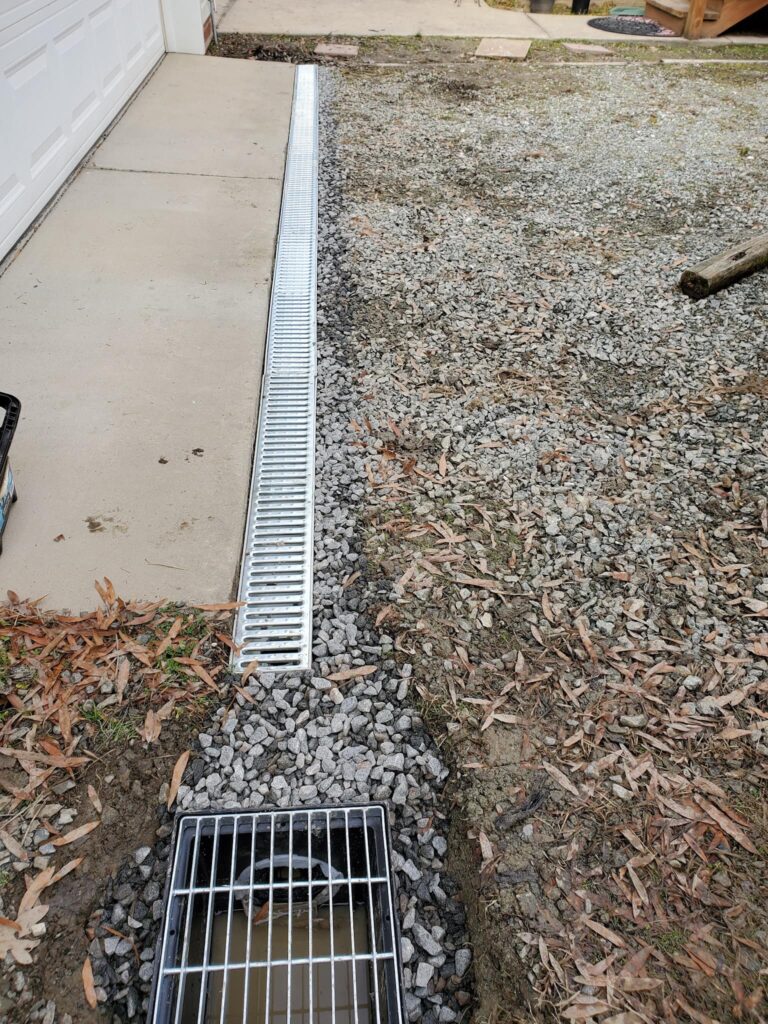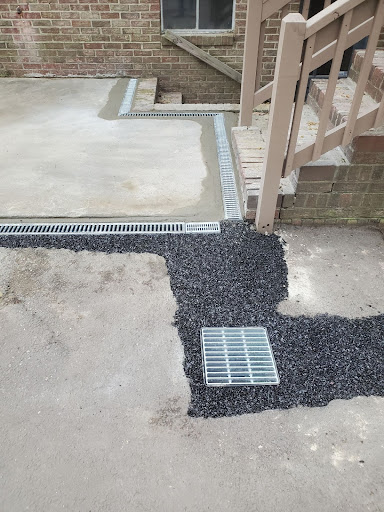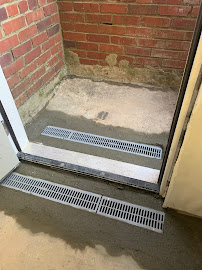
The importance of a well-functioning drainage system cannot be understated when it comes to maintaining the structural integrity of your home. Home drainage might not be the most exciting topic for most homeowners, but its significance extends far beyond what meets the eye. It is the unsung hero who works behind the scenes to safeguard your property from water damage, soil erosion, and a host of other potential problems. By mastering the art of home drainage, you can help prevent issues such as water pooling, foundation damage, and even flooding.
Understanding the intricacies of exterior drains is a critical component of this mastery. The type of drain, its location, installation, and maintenance all play pivotal roles in ensuring effective water management around your property. We will delve into various types of exterior drains, their specific functions, and how they contribute to an efficient home drainage system.
Why is Home Drainage Important?
An effective yard drainage system is vital for several reasons. It helps control the flow of water around your property, preventing it from accumulating in unwanted areas. Water accumulation can lead to a host of problems, including soil erosion, water stains, and even foundation damage. Proper drainage helps keep your lawn and garden healthy by preventing waterlogging, which can suffocate plants and encourage the growth of harmful fungi.
Understanding Different Types of Exterior Drains
When it comes to exterior drains, not all are created equal. They each have their specific functions and are suited to different situations. Here are some of the most common types:
Surface Drains
To get rid of surface water that accumulates on your land, surface drains are intended. They consist of a grate that is placed at ground level and connected to a series of underground pipes. Surface drains are particularly useful in flat areas where water tends to pool.
French Drains
A French drain, also known as a weeping tile system, is engineered to safeguard your home’s foundation by diverting water from it. The system comprises a trench drain filled with gravel, along with a punctured pipe. This pipe serves the function of gathering water and rerouting it away from your residence.
Trench Drains
To manage water over a large area, trench drains, also referred to as channel drains, are used. They are frequently utilized in driveways and other sizable paved areas.
Downspout and Gutter Systems
The drainage systems of your home need gutters and downspouts to function properly. They collect rainwater from your roof and direct it away from your home’s foundation.

How to Install Exterior Drains
While professional installation is usually recommended for exterior drains, some homeowners may choose to install them on their own. Here’s a general guide on how to do it:
Planning and Preparation
Before you start digging, you need to plan your drainage system carefully. This includes determining the best location for your drains, deciding on the type of drain that’s most suitable for your needs, and marking out the area where you’ll be working.
Digging the Trenches
Once your plan is in place, the next step is to dig the trenches for your drains. The depth and width of the trenches will depend on the type of drain you’re installing.
Laying the Pipes
After the trenches are dug, you can then lay the pipes. These should be sloped slightly to allow water to flow through them easily.
Backfilling the Trenches
Once the pipes are laid, the trenches can be backfilled with gravel. This helps to improve drainage and prevents the pipes from becoming clogged.
Maintaining Your Exterior Drains
Even the best drainage system can fail if it’s not properly maintained. Regular cleaning and inspections can help ensure your drains stay in good working order and continue to protect your home from water damage.
Signs of Drainage Problems
Recognizing the signs of drainage problems early on can help you address them before they turn into bigger issues. Some common signs of drainage problems include water pooling in your yard, damp or basement leaks, and watermarks on your walls.
How to Fix Common Drainage Issues
If you notice any signs of drainage problems, it’s important to address them as soon as possible. Depending on the issue, you may be able to fix it yourself or you may need to call in a professional.
Hiring a Professional
When faced with serious drainage issues, hiring a professional waterproofing Chester VA can be a wise decision. Professionals have the necessary training and tools to diagnose and resolve drainage problems efficiently and effectively. They can also provide valuable advice on how to prevent future issues.
When hiring a professional, it’s important to do your research. Get quotes from multiple service providers and compare their prices, services, and reviews. Don’t hesitate to ask questions about their experience, qualifications, and how they plan to address your specific issues. Remember that the cheapest option isn’t always the best one. The goal is to find a reputable professional who can provide a long-term solution to your drainage problems.

Mastering the art of home drainage is not just about installing the right drains, but also about understanding how they work and how to maintain them. With this comprehensive knowledge, you can make informed decisions and take proactive measures to safeguard your home from potential Chester VA waterproofing damage. A robust, well-maintained exterior drainage system is an investment in the longevity and health of your property.
Remember that while this guide provides a solid foundation, every home is unique and may present its own set of challenges. When in doubt, it’s always prudent to consult with professionals. They can provide tailored advice based on your property’s specific needs and conditions, helping you navigate any complexities that may arise.
Frequently Asked Questions
How often should I clean my drains?
You should inspect and clean your drains at least once a year. If you notice any signs of blockages or drainage problems, you should address them immediately.
Can I install exterior drains myself?
While it is possible to install some types of exterior drains yourself, it’s usually best to hire a professional. This ensures the job is done correctly and safely.
What should I do if my drains are not working effectively?
If you notice that your drains are not working as they should, it’s important to address the problem as soon as possible. This may involve cleaning the drains, repairing any damage, or in some cases, replacing the drains entirely.
How much does it cost to install exterior drains?
The cost of installing exterior drains can vary widely depending on the type of drain, the complexity of the installation, and your location. It’s always a good idea to get several quotes before making a decision.
What are the benefits of installing exterior drains?
Exterior drains help channel excess water away from your home, reducing the risk of flooding and damage to the foundation. They also reduce the amount of moisture in your yard, protecting it from erosion and promoting healthy growth. They can improve drainage when used with gutters, downspouts, and other components of the drainage system. They can also help improve your home’s overall aesthetic by hiding unsightly areas of standing water.
